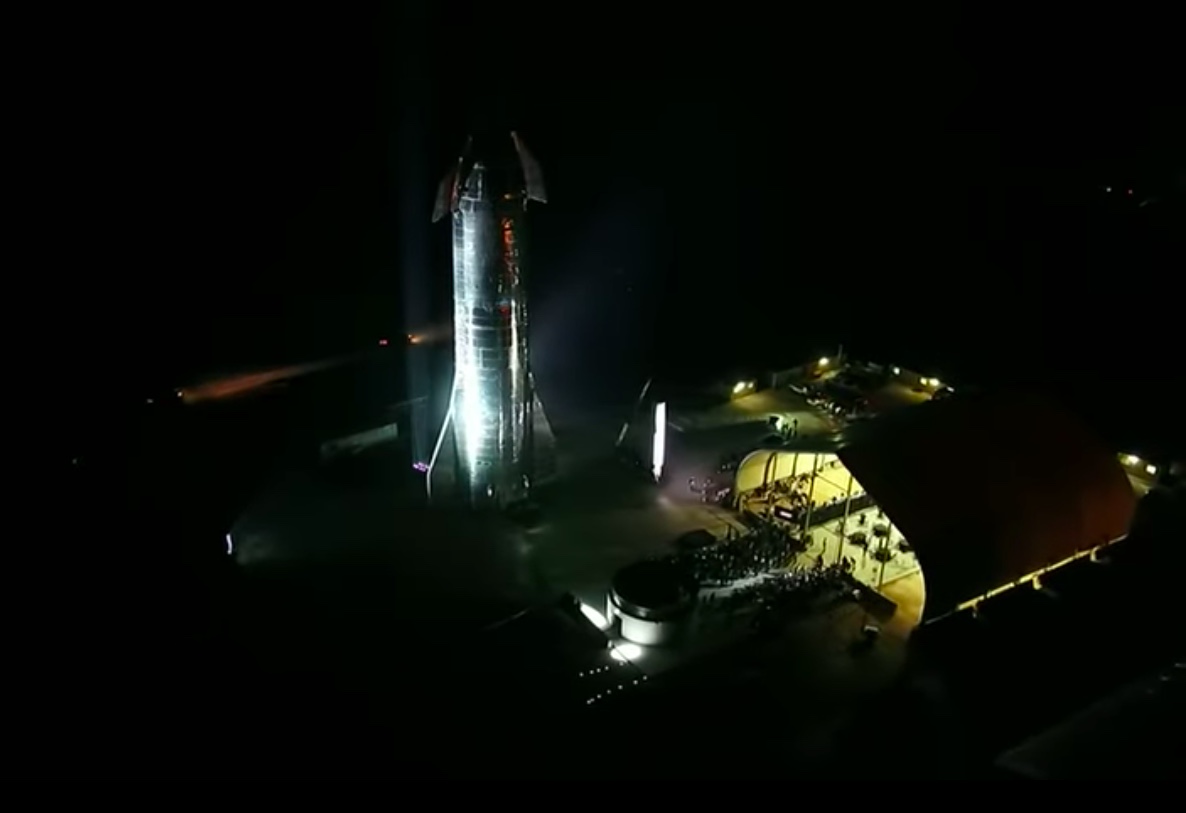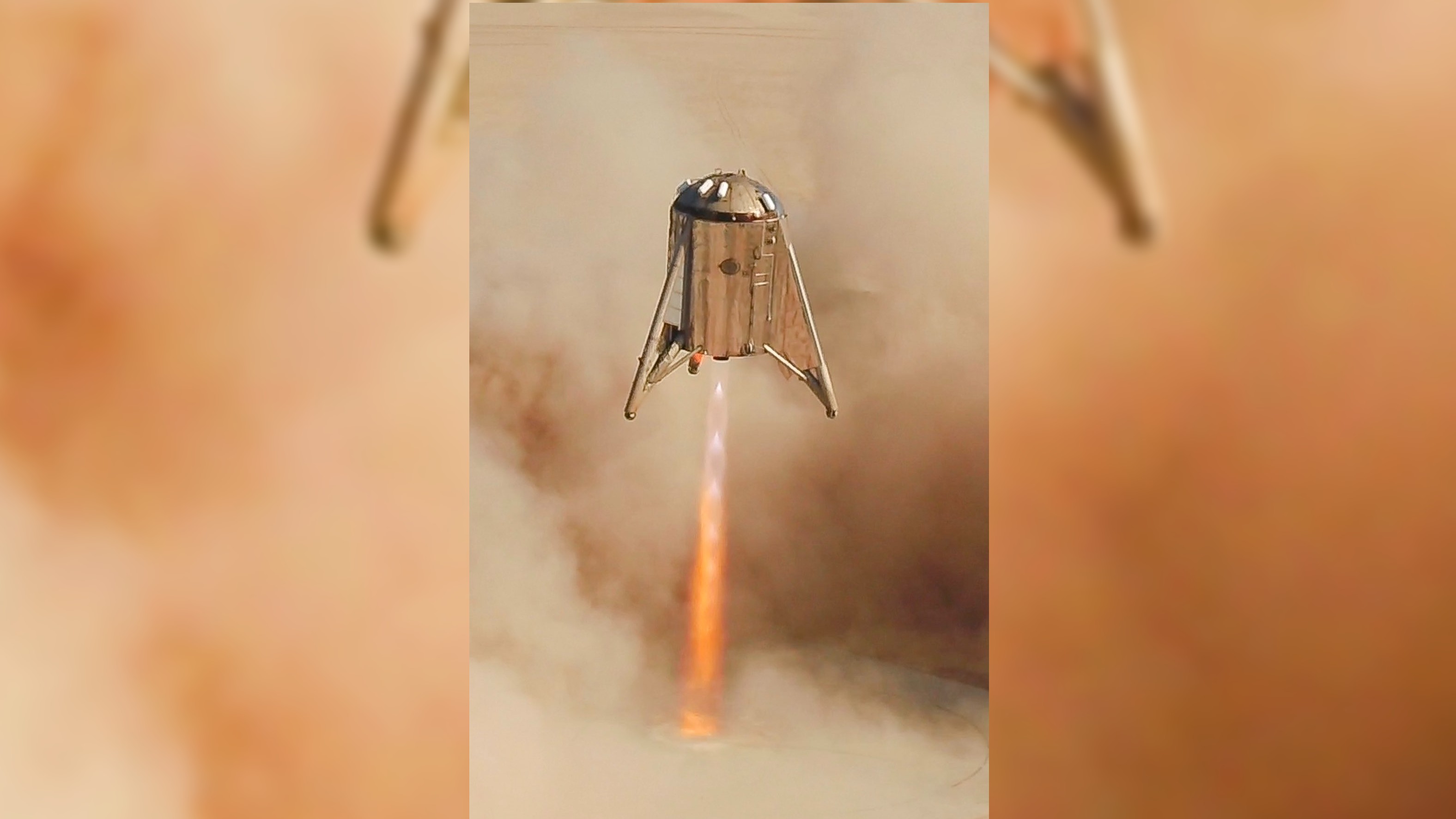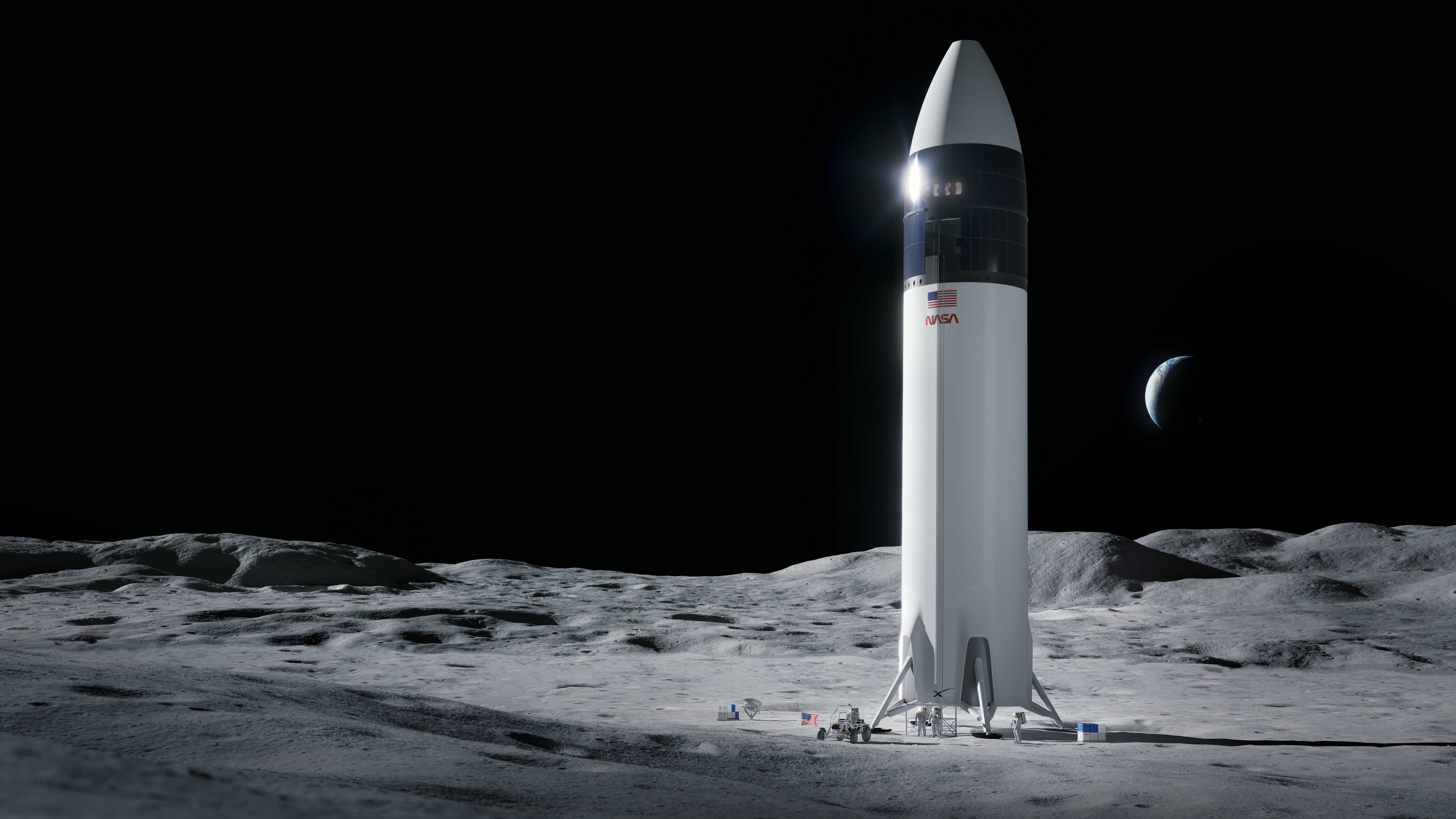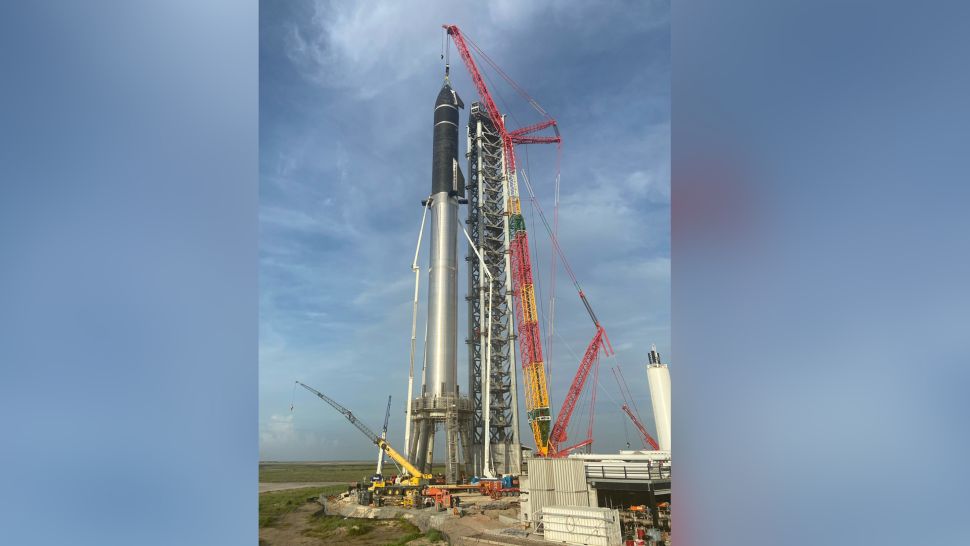SpaceX Starship: Key milestones for the world's most powerful rocket
SpaceX's Starship program, which boasts the world's tallest and most powerful rocket, will eventually put people and cargo on Mars. The latest prototype, SN20, is waiting for the chance to go into orbit. Several other prototypes have made flights, ground tests and sometimes even testing mistakes in the effort to improve future flights. Here's an overview of key milestones on Starship's road to the Red Planet.
Video: Every SpaceX Starship explosion and what Elon Musk learned from them
20 years in the making
Billionaire Elon Musk created SpaceX in 2002 from the sales of two earlier businesses: software-service internet company Zip2 and online payment provider PayPal. His ultimate goal was to create a Mars settlement company. That said, SpaceX has been plenty busy in other realms of space: The company built Dragon cargo ships and Crew Dragon astronaut spaceships for the International Space Station and launched satellites for numerous customers aboard the Falcon 9 and Falcon Heavy rockets.
As for Mars, Musk periodically releases new far-out Mars visions (and sometimes changes the names and metrics of the systems) for sending crews, cargo and rockets. Musk rebranded his Mars-colonizing spaceflight system as Starship in 2018. "Technically, two parts: Starship is the spaceship/upper stage & Super Heavy is the rocket booster needed to escape Earth's deep gravity well (not needed for other planets or moons)," Musk said in a 2018 tweet.
Related: See the evolution of SpaceX's rockets in pictures
Key design change
At first, Musk planned to make Starship out of carbon fiber, but in January 2019, he announced that the craft would be built from stainless steel instead, Space.com reported. While stainless steel is heavier than carbon fiber — initially increasing the needed fuel for launch, along with the associated cost — Musk said stainless steel has better thermal properties for spaceflight, and so it would reduce the cost in the long run. Musk later said this design change was the best decision he made for the project.
Starship has undergone a few more design changes since 2019, too. Musk chose to put six Raptor engines on the Starship vehicle instead of seven. He also changed the number of Raptors on the Super Heavy, initially dropping the number from 35 to 31 and then increasing it again to include up to 37 Raptors. (Not all engines will be needed on each flight, but at least 24 Raptors are required to carry the huge craft into space, Musk has said.)
Breaking space news, the latest updates on rocket launches, skywatching events and more!
A surprise design change to Starship was revealed in 2021, Space.com reported, when Musk said watching Sacha Baron Cohen's 2012 film "The Dictator" inspired him to make the vehicle pointier. "Round is not scary. Pointy is scary," Cohen's Adm. Gen. Aladeen, a fictional dictator, said of a missile that his engineers created.
Round-the-moon trip
Japanese billionaire Yusaku Maezawa, founder of Japanese e-commerce giant Zozo, bought a round-the-moon trip, dubbed dearMoon, aboard Starship in September 2018 — a ticket to fly himself and several artists on a lunar venture. (Back then, Starship was called Big Falcon Spaceship, and Super Heavy was called Big Falcon Rocket.) While Starship hadn't started testing yet, Musk said he expected it could be ready for the mission as soon as 2023.
In January 2020, Maezawa briefly considered holding a controversial "girlfriend contest" in association with the dearMoon flight but withdrew the offer in 2020 only two weeks after the announcement. In March 2021, dearMoon organizers announced they were looking for up to eight crewmembers to fly around the moon with Maezawa. Selection is presumably ongoing as of August 2021, as there have been no further announcements about the crewmembers. The mission remains targeted for flight in 2023.
Starhopper test program
Starhopper was a low-altitude prototype of the Starship system that looked more like a flying tank than an aerodynamic rocket. SpaceX did two "static fire" tests of the system at its facility in Boca Chica, Texas, to evaluate the performance of the engine in 2019, and then followed that up with four short test flights that same year.
The Starship's first 1-foot (0.3 meter) tethered hop lasted 3 seconds. "Starhopper just lifted off & hit tether limits!" Musk said April 6, 2019, tweeting a dramatic fiery video of the first static fire test. The stubby vehicle made four test flights in total: two on a tether for safety reasons and two fully unleashed.
On the first free flight, on July 25, 2019, the prototype soared to an expected altitude of 65 feet (20 m). Its last flight before retiring on Aug. 27, 2019, was expected to go as high as 500 feet (150 m), in line with a limit imposed by the U.S. Federal Aviation Administration (FAA).
Two hops before flying high
Starship's program tested several ground prototypes before attempting flight. The list of major prototypes in 2019 to 2020 included MK1 (destroyed during a tank pressure test), MK2 (abandoned for a newer design), MK3/SN1 (destroyed during a pressurization test), SN2 (pressure tested successfully), SN3 (destroyed during a test of its pressure tank) and SN4 (destroyed during a static fire test, following several successful tests).
Starship's SN5 and SN6 prototypes conducted low-altitude test hops. SN5 reached an altitude of about 500 feet on Aug. 4, 2020, and moved sideways in the sky to reach its landing area. SN6 also made a 500-foot jaunt on Sept. 3, 2020. "Turns out, you can make anything fly haha," Musk tweeted about the SN6 flight, with a video showing a tank-like structure wobbling through the air.
SpaceX deliberately destroyed SN7 during a ground test to gather data for future flights. SN8, which took to the air on Dec. 23, 2020, performed complex aerial maneuvers and flips during the program's first high-altitude launch. It flew to 7.8 miles (12.5 kilometers) but failed to stick the landing, according to a video shot from the landing pad that showed it exploding in a fireball on the ground due to lower-than-expected pressure in the fuel tank header.
Crash and crash again
In a quick sequence in February and March 2021, the Starship program sent aloft three more prototypes on high-altitude flights: SN9, SN10 and SN11. The vehicles flew for about 6 minutes each, but all three experienced technical problems during landing that resulted in fiery crashes or after-touchdown explosions.
After every flight, Musk sent tweets explaining what had happened and what modifications he planned to make to Starship prototypes to improve the program for the next attempt. For example, Musk tweeted after the touchdown explosion of SN11, "Looks like engine 2 had issues on ascent & didn't reach operating chamber pressure during landing burn, but in theory, it wasn't needed."
Controversial moon contract
In April 2021, NASA selected SpaceX's Starship over the competition (Blue Origin and Dynetics) for a $2.9 billion moon-lander contract that is part of the space agency's Artemis program. With that mission, NASA aims to put astronauts on the moon sometime in the 2020s; a previous 2024 target was deemed "not feasible" in August 2021 due to unrelated spacesuit development delays, according to NASA's inspector general. NASA at first wanted to select two companies for this stage of the contract, but the agency received less money from Congress than desired for its human landing systems.
Both Blue Origin and Dynetics protested the decision, but the Government Accountability Office upheld NASA's choice in August 2021. The GAO acknowledged NASA's last-minute decision to switch its contract to a sole-source option but added that in its review, "We nonetheless find no basis on which to sustain the protests because the protesters have failed to establish any reasonable possibility of resulting competitive prejudice."
SN15's perfect landing
SpaceX's Starship SN15 prototype stuck the landing on the 60th anniversary of the United States' first-ever crewed spaceflight, when astronaut Alan Shepard blasted into space aboard NASA's Mercury capsule. On May 5, 2021, SN15 soared 6.2 miles (10 km) into the sky and made several maneuvers in midair. Six minutes after takeoff, the prototype made a safe touchdown on a concrete landing pad at Boca Chica. As of August 2021, this was the latest flight for the Starship program.
In a flight description, SpaceX representatives said several vehicle changes were present in the new prototype. "SN15 has vehicle improvements across structures, avionics and software, and the engines that will allow more speed and efficiency throughout production and flight: specifically, a new enhanced avionics suite, updated propellant architecture in the aft skirt and a new Raptor engine design and configuration."
Great heights
SpaceX's newest Starship prototype briefly stood atop a Super Heavy rocket booster for the first time on Aug. 6, 2021, marking the tallest-ever rocket ever built. "Dream come true," Musk wrote on Twitter of the stacked Starship.
The stacking test at Boca Chica included mating the two vehicles for an hour, with the joined Starship system standing 395 feet (120 m). For comparison, NASA's massive Saturn V moon rocket, used for the Apollo missions, was just 363 feet (110 m) tall.
Individually, the Super Heavy stands 230 feet (70 m) tall, and Starship SN20 added another 165 feet (50 m) of height. The two vehicles are expected to undergo numerous technical tests in August to prepare them for an orbital attempt.
Orbital flight attempt
Regulation remains the big uncertainty as Starship awaits its chance to make an orbital flight test. If all goes according to plan, Space.com reported, the spaceship will make a round-the-world trip to splash down off the coast of Hawaii after 90 minutes, while the first stage of the Super Heavy rocket should return to Earth 6 minutes after launch in the Gulf of Mexico.
However, the FAA has undertaken an environmental assessment of the Starship's mission, which delayed SpaceX's plans to attempt the flight in July 2021. Even after the assessment is finished, there could be more certifications to consider.
"Depending on the outcome of that [environmental] assessment, it [SpaceX] may also be required to go through a more detailed review culminating in an updated environmental impact statement. Only after that process is complete can the Federal Aviation Administration move on to licensing a possible orbital Starship launch," CNN Business reported in June 2021.
Originally published on Live Science.

Elizabeth Howell (she/her), Ph.D., was a staff writer in the spaceflight channel between 2022 and 2024 specializing in Canadian space news. She was contributing writer for Space.com for 10 years from 2012 to 2024. Elizabeth's reporting includes multiple exclusives with the White House, leading world coverage about a lost-and-found space tomato on the International Space Station, witnessing five human spaceflight launches on two continents, flying parabolic, working inside a spacesuit, and participating in a simulated Mars mission. Her latest book, "Why Am I Taller?" (ECW Press, 2022) is co-written with astronaut Dave Williams.










